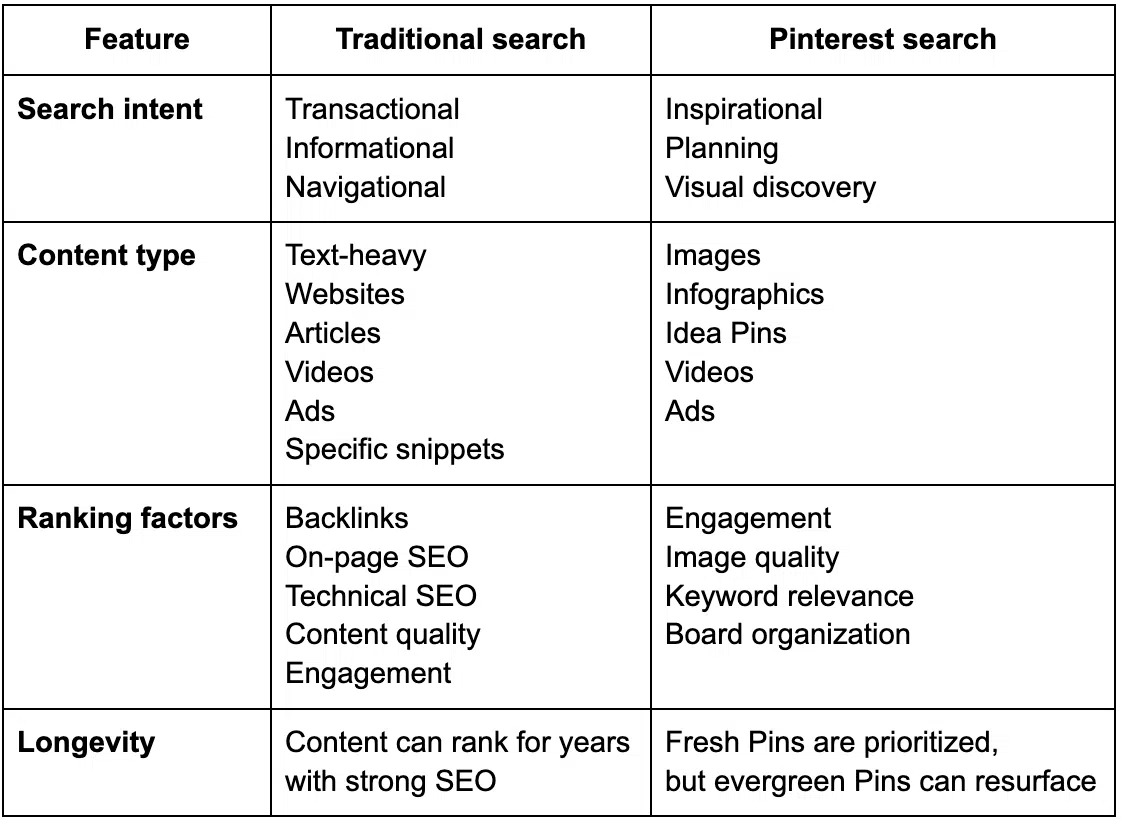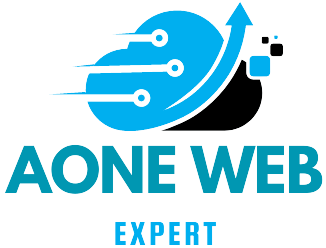Pinterest isn’t just another social platform—it’s a powerful search engine that helps brands, businesses, and content creators get discovered by high-intent users. Unlike traditional social media, which focuses on conversations and real-time engagement, Pinterest is built for search-driven discovery.
Users come to Pinterest with a purpose—whether it’s to find inspiration, plan projects, or discover new products. This presents a unique opportunity for brands to increase organic visibility and drive referral traffic.
In this guide, we’ll explore:
- How Pinterest functions as a visual search engine
- The ranking factors that influence visibility
- The best practices for Pinterest SEO optimization
How Pinterest Works as a Search Engine
Pinterest operates differently from platforms like Instagram and Facebook. Instead of prioritizing social interactions, Pinterest focuses on search intent and content relevance.
Users arrive with a clear purpose, often with high purchase intent, making them valuable potential customers for brands that optimize their content effectively.
Pinterest’s Smart Feed: How Content is Ranked
Pinterest’s algorithm, known as the Smart Feed, determines which content appears in users’ feeds and search results. Instead of displaying content chronologically, the Smart Feed curates content based on:
- Relevance to search queries – Keywords in Pin titles, descriptions, board names, and image alt text improve discoverability.
- Engagement metrics – Pins with more saves, clicks, and close-ups signal quality and rank higher.
- Freshness of content – Newly created Pins are prioritized over reshared or older content.
- Pinner authority and board quality – Accounts with well-organized, keyword-rich boards tend to perform better.
- Image quality and format – High-resolution, vertical images (2:3 ratio) increase engagement.
Pinterest vs. Traditional Search Engines
While Pinterest is a search engine, it works differently from Google or Bing. Instead of relying on backlinks and traditional SEO signals, Pinterest ranks content based on visual appeal, keyword relevance, and user engagement.
Keyword Research for Pinterest SEO
Like traditional SEO, keyword research is the foundation of Pinterest SEO. Understanding how users search for content helps optimize your profile, Pins, and boards for better visibility.
How to Find Keywords on Pinterest
Pinterest doesn’t provide exact search volume data, but you can identify high-interest keywords through:
-
Pinterest Search Bar Autocomplete
- Start typing a broad keyword (e.g., “home decor”).
- Review Pinterest’s auto-suggestions for popular search queries.
- Click on a suggested keyword to discover long-tail keyword variations.
-
Pinterest Trends Tool
- Tracks rising and declining search trends.
- Helps identify seasonal patterns for better content planning.
- Allows comparison of keyword popularity over time.
Additional Keyword Research Tools
- Pinterest Ads Manager – Provides keyword suggestions for ad campaigns (useful for organic research).
- Google Keyword Planner – Identifies related search terms that may also be trending on Pinterest.
- Buzzabout.AI – Analyzes social media conversations for emerging keyword opportunities.

“Source: Searchengineland”
Optimizing Pins for Search Discovery
Once you’ve identified relevant keywords, the next step is optimizing your Pins for better search rankings. Since Pinterest is a visual-first platform, the design, format, and metadata of your Pins play a crucial role in performance.
Best Practices for Pin Design
- Use the recommended image size – 1000×1500 pixels (2:3 ratio).
- Add clear text overlays – Helps communicate the Pin’s value quickly.
- Maintain brand consistency – Use brand colors, fonts, and logos for recognition.
- Choose high-quality visuals – Bright, high-resolution images perform best.
- Create fresh Pins regularly – Pinterest favors new content over reshared Pins.
Writing Optimized Pin Titles and Descriptions
Pinterest relies on text-based metadata to rank content. A well-crafted title and description can significantly boost your Pin’s discoverability.
Title Optimization Tips
- Keep it between 40-100 characters.
- Place primary keywords at the beginning.
- Use an engaging hook to capture attention.
Description Optimization Tips
- Write detailed descriptions (up to 500 characters).
- Incorporate primary and secondary keywords naturally.
- Use a conversational tone to encourage engagement.
- Add a clear call-to-action (CTA) to drive user action.
Example
✅ Pin Title: “Best Morning Skincare Routine for Glowing Skin”
✅ Pin Description: “Looking for a simple yet effective morning skincare routine? This guide covers the best products and steps for glowing skin. From gentle cleansers to SPF protection, discover the essentials for healthy skin. Save this Pin for your daily routine inspiration!”
Tracking Performance with Analytics
Pinterest SEO isn’t just about optimizing content—you need to track and refine your strategy over time.
Using Pinterest Analytics
Pinterest Business accounts provide access to Pinterest Analytics, where you can track:
- Impressions – How often your Pin appears in feeds and search results.
- Saves (Repins) – The number of users saving your Pin to their boards.
- Outbound Clicks – How many users clicked your Pin to visit your website.
- Close-ups – The number of users zooming in on your Pin.
- Engagement Rate – A mix of saves, clicks, and interactions.
📌 Pro Tip: If a Pin has high impressions but low clicks, test different images, titles, or CTAs to improve engagement. If a Pin has low impressions, revisit your keyword strategy to align with user searches.
Tracking Pinterest Traffic in Google Analytics
To see how Pinterest is driving traffic to your website:
- Go to Google Analytics.
- Navigate to Acquisition > Traffic Sources.
- Filter by Referral Traffic and locate Pinterest.
- Analyze bounce rate, session duration, and conversions.
Pinterest is more than just a social platform—it’s a powerful discovery engine that helps brands reach high-intent audiences.
By applying SEO techniques like keyword research and combining them with visual-first best practices, you can significantly boost your discoverability and website traffic.
Whether you’re a blogger, eCommerce brand, or content creator, optimizing your Pinterest SEO strategy will give you a competitive edge in today’s evolving digital landscape.
💡 Start optimizing today and watch your brand visibility grow! 🚀
Sharing is Caring!
